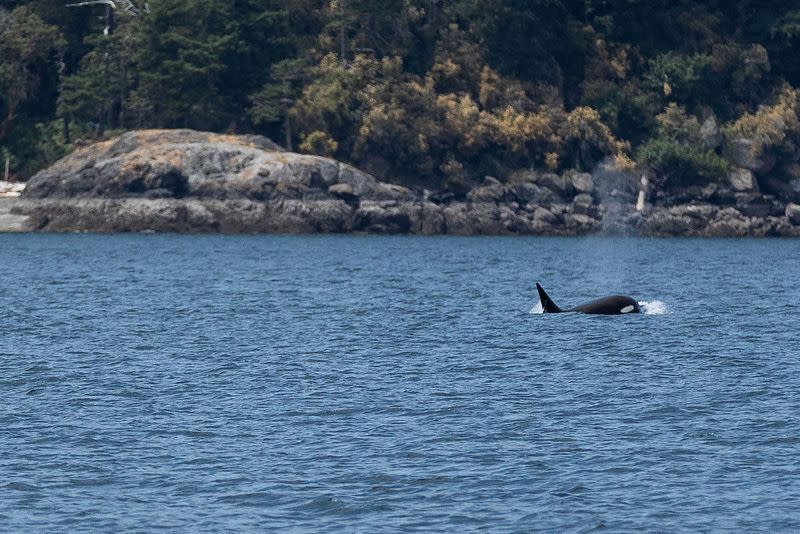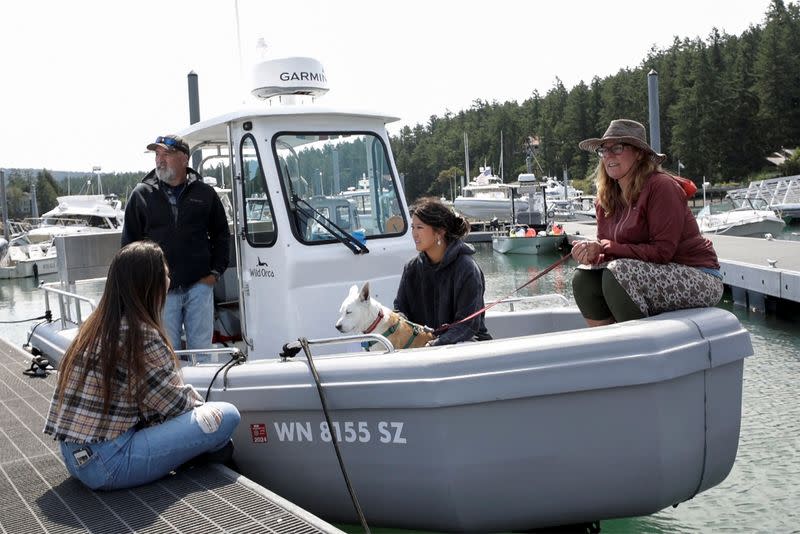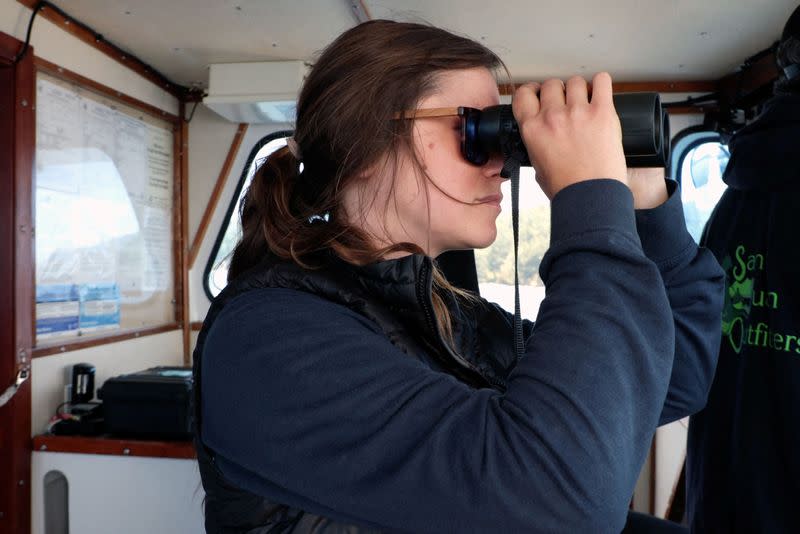Malice, mischief or fad? Orca experts intrigued by boat bumpings
By Matt McKnight and Jane Ross
SEATTLE (Reuters) - As orcas have repeatedly rammed boats in waters off the Iberian Peninsula, experts who study the killer whales' behavior on the other side of the world believe aggression is likely not to blame for the bumpings.
Washington state's Salish Sea and Puget Sound are home to both pods of the black and white orcas and some of the world's top experts on their comportment.
"They're incredibly social animals, they're curious animals, they're playful, and I think that's what they're doing," said Dr. Deborah Giles, a resident scientist at the University of Washington’s Friday Harbor Laboratories and director of the Wild Orca conservation research organization.
The mammals are likely attracted to vibrations or currents from the vessels, Giles said, and might be using them simply to "go for a ride."
But playful or not, the damage to boats is real. In one of dozens of orca interactions with vessels recorded so far this year on Spanish and Portuguese coasts, a group broke the rudder and pierced the hull of a sailing boat in May, prompting its crew to call for rescue.
While the interactions may be frightening, they have also spawned a popular social media trend that humorously suggests killer whales are rising up to attack wealthy yacht owners.
Naturalist Olivia Hafey educates tourists about orcas on whale watching trips out of Friday Harbor on Washington’s San Juan Island.
On a recent trip, visitors caught a glimpse of a group known as Bigg's T65B pod, a growing orca population that feeds on marine mammals, in contrast to the endangered Southern Resident population, which primarily eats Chinook salmon.
"It's all about the chase," Hafey said of the Iberian Peninsula incidents. "It comes off with these aggressive connotations, but it's not necessarily an aggressive behavior."
Dr. Michael Weiss, research director of the Center for Whale Research, has another theory for the orcas’ behavior – it’s a fad.
"We've seen killer whales do fad-like behavior, and other cetaceans have fads. They do culturally transmit behaviors and strategies pretty constantly," Weiss told Reuters.
It wouldn’t be the first unusual trend observed among the highly social apex predators. In 1987, Washington’s Southern Resident orcas suddenly began wearing dead salmon on their heads, like hats. Then just as quickly as it began, the craze was over.
"Obviously, the Iberian Peninsula behavior is lasting longer than that, it's been going on for a few years now," Weiss said. "But it certainly doesn't seem like something each whale learned individually. It seems like most likely it was one or two whales who started doing it and other whales learned."
For Giles, who spends most of her time studying the endangered Southern Resident population with her dog Eba, who uses its sense of smell to guide the research vessel to the orcas, the new behavior is intriguing and ultimately inscrutable.
"We're never going to know exactly why," Giles said. "That's part of the charm of it. At least it is for me. I like for the whales to keep their secrets."
(Reporting by Matt McKnight in Seattle; Writing by Jane Ross; Editing by Mary Milliken and Diane Craft)





